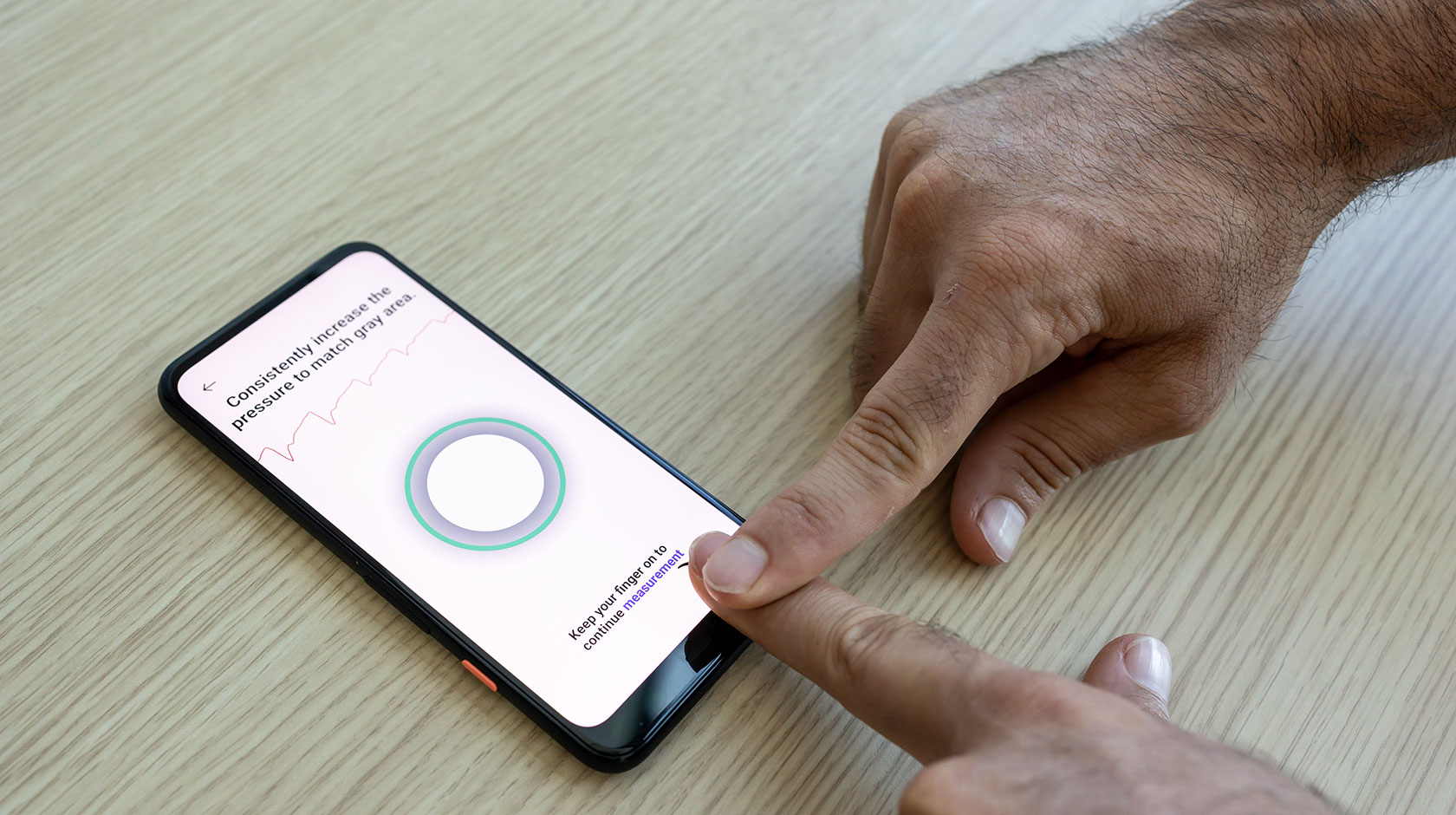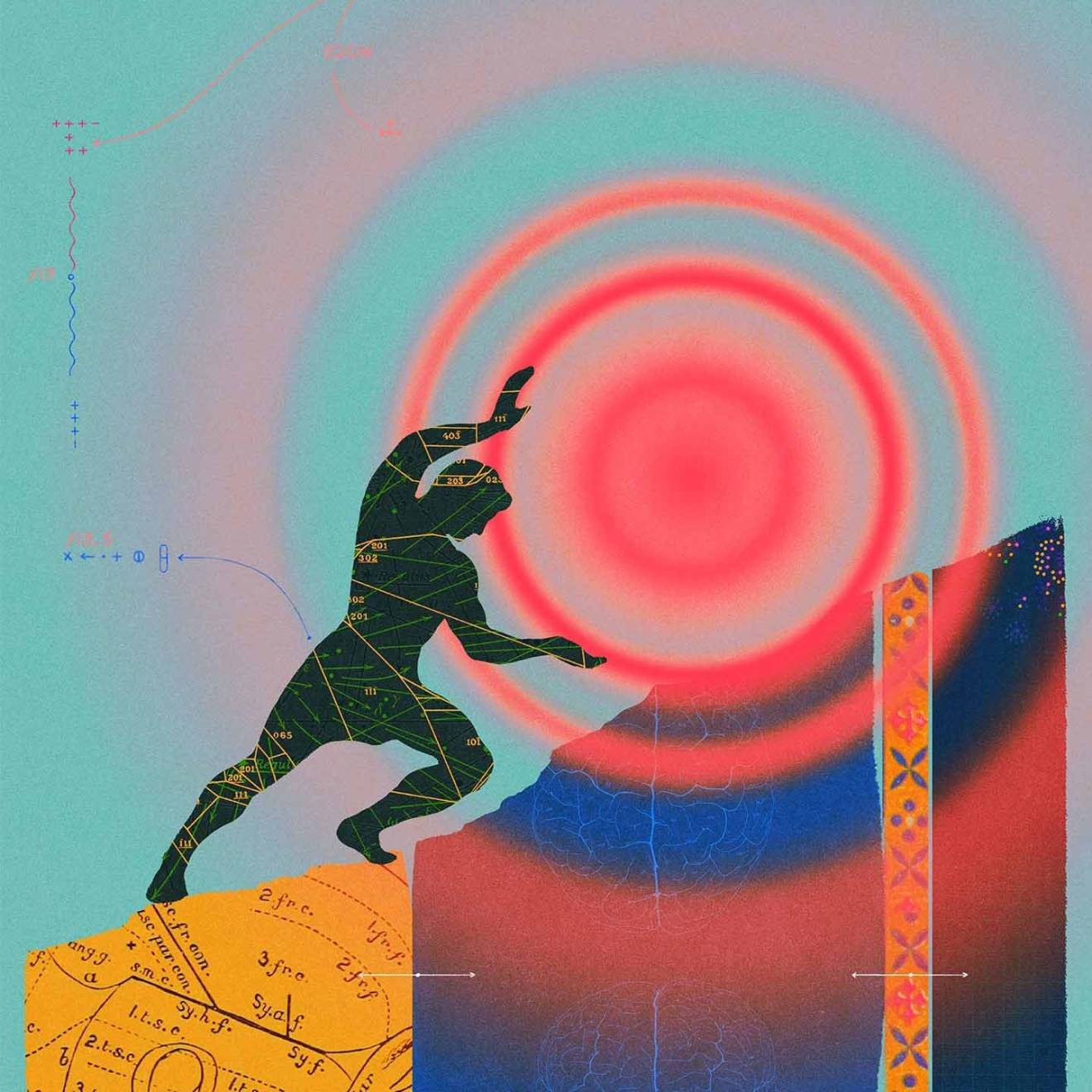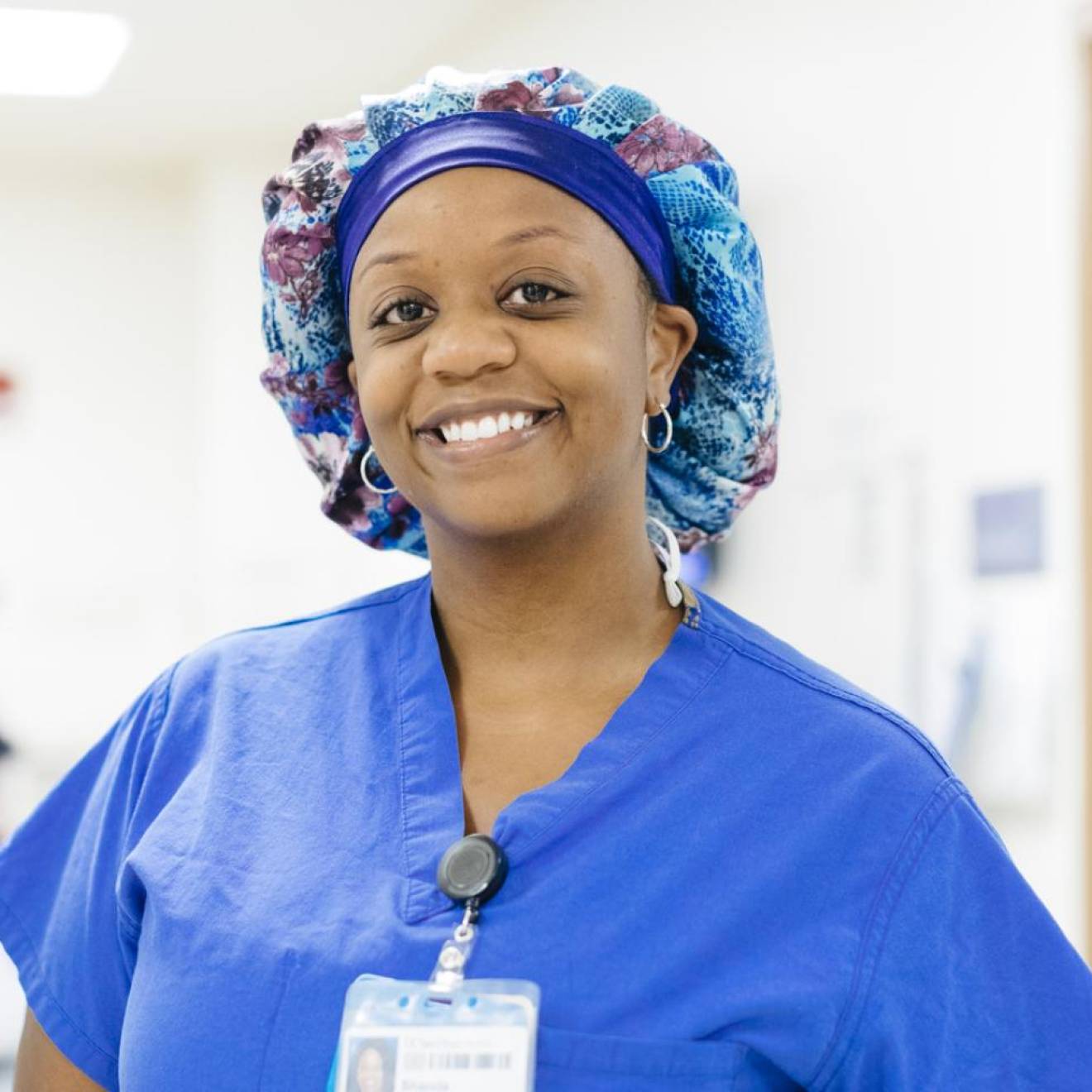Jesse Rutherford, UC San Diego

Soon, you will be able to take your blood pressure at home using only your smartphone, thanks to Vibro, an app from Billion Labs, a spinoff company founded by electrical engineers at the University of California San Diego. Vibro, designed by Edward Wang, an assistant professor of electrical and computer engineering in the Jacobs School of Engineering and the Design Lab and doctoral student Colin Barry, uses a phone's native camera, vibration motor and motion sensor.
Unlike other devices currently on the market, Vibro does not rely on a separate blood pressure cuff: when a patient’s finger is pressed to the screen of a vibrating phone, the finger pressure dampens the vibration. The phone senses how much damping occurs and uses this value to calculate the amount of force on the screen. Through the relatively thin tissue of a finger, the camera can see both the pulse and the point at which finger pressure cuts off blood flow. Oscillometric blood pressure is then determined using standard calculations based on the time elapsed after blood flow is cut off.
Competing solutions for blood pressure measurement under development use a method called pulse-wave analysis. Because pulse-wave analysis is affected by factors such as body length, arterial stiffness and body position, it is a less reliable method, even though it incorporates calibration from a blood pressure cuff. “The literature is starting to show that pulse-wave analyses of blood pressure are very unstable,” says Wang.
The development of the Vibro app has been supported by the National Institutes of Health (NIH) through multiple programs—including the Year 3 cohort of NIH MassAITC Pilot Awardees, a $4.3 million effort, and by the NIH POCTRN program under the CAPCaT mechanism. Billion Labs’ preliminary research at UC San Diego was funded under Wang’s Google Research Scholar Award fellowship.
The developers' attention to user-focused design most recently received a Special Recognition Award from the Don Norman Design Awards. Users who press too hard will cut off blood flow before there is a pulse reading; those who press too lightly on the smartphone screen to cut off blood flow will not get a blood pressure reading. Furthermore, a few seconds of steady pressure are required to establish blood pressure.
When the technical team conducted initial tests on themselves, it was simple to take a reading because they brought a wealth of knowledge to the task: everything from anatomy to calculations to the functionality of the hardware informed their interaction with the device. But how to lead a lay user to do the same?
Finding an effective user experience solution for Vibro became a design exercise in every sense. The intricacy of the design problem spanned not only traditional considerations around visual user interfaces, but also around the measurement itself.
The user experience solution incorporated myriad changes from the original prototype borne out of work at the academic lab. These included new graphics that helped users follow a real-time onscreen guide for precise pressure application, step-by-step tutorials and instructing the user to press on the screen with two hands, a technique aimed at improving usability for older adults with diminished dexterity. The new solution boasts higher reliability and replicability, and can even be used with the help of a caregiver to hold the patient’s finger to the screen.

“Coming to this was a journey,” Wang says, proudly demonstrating the two-handed method in the latest version of the Vibro app. “It showed that when you have users as part of the system, theoretical systems break–heavily. This is the inherent nature of medical devices that are operated by patients, and requires finesse in design.”
In addition to Vibro, which they plan to license as an application programming interface (API) to other medical device companies, the team has filed patents for other smartphone-based health measurement methods, such as a tool for assessing grip strength to determine patient readiness for surgery.
The team will present Vibro at the UC San Diego-sponsored Innovation Day at Petco Park on September 24 and receive the Don Norman Design Special Recognition Award on November 15 at the Don Norman Design Award Summit. Other team members whose work was integral to the award-winning design work include Tatsuo Kumamoto, Ampi Averbuj, Chelsea Maples, and Ann Lin. Billion Labs operates out of a dedicated office space as a resident startup of UC San Diego’s Entrepreneurship Center on the fourth floor of the Design and Innovation Building. In addition to Wang and Barry, Billion Labs is staffed by a full-time engineer and intermittent interns in engineering and design.
The development of the Vibro app has been supported by the National Institutes of Health (NIH) through multiple programs—including the Year 3 cohort of NIH MassAITC Pilot Awardees, a $4.3 million effort, and recently by the NIH POCTRN program under the CAPCaT mechanism. Billion Labs’ preliminary research at UC San Diego was funded under Wang’s Google Research Scholar Award fellowship.

